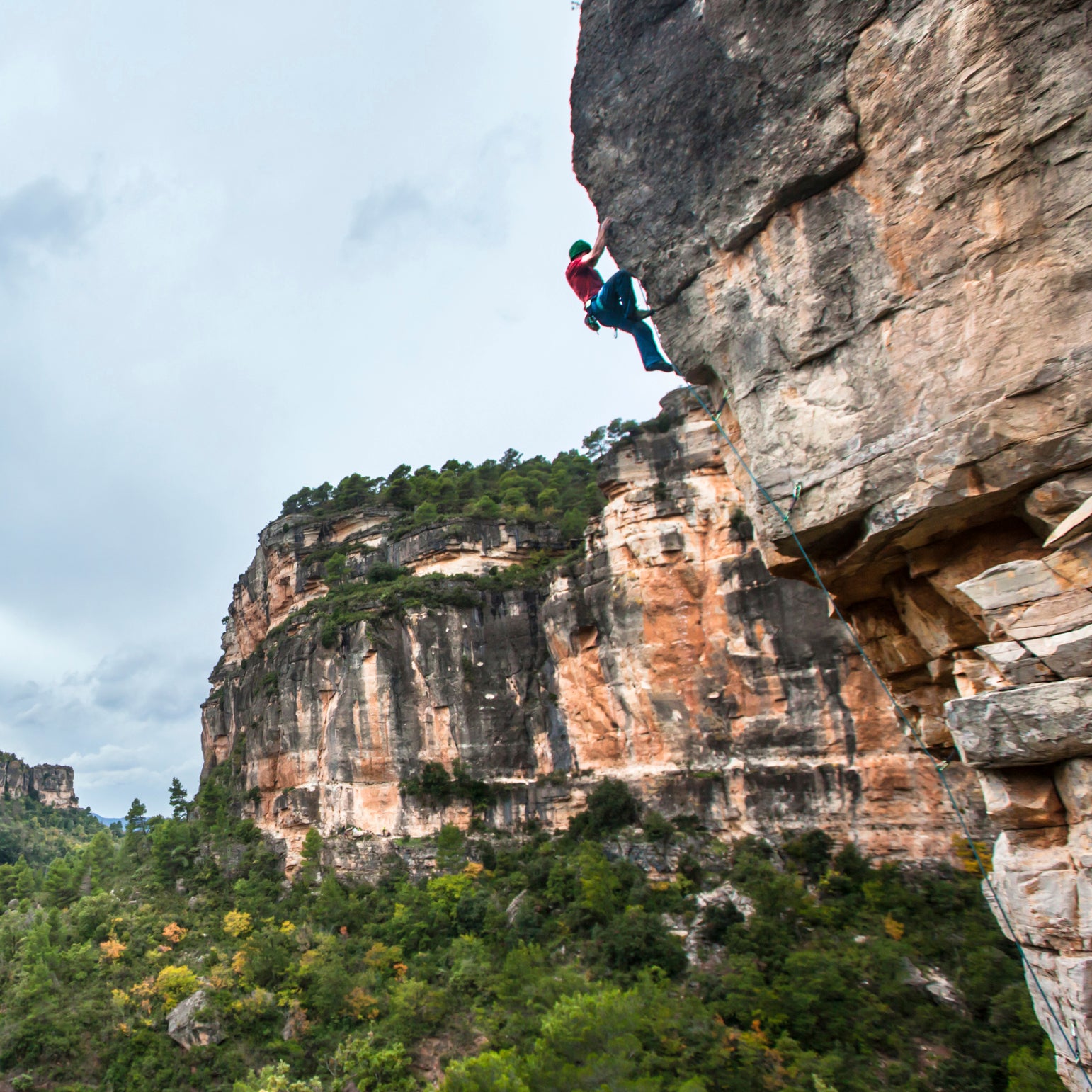I first visited Spain in 2008, when I was 16 years old, to climb with friends I’d met through the international competition circuit. I didn’t know much about the climbing scene in Spain before the trip, but I’d heard that all the top climbers go to at one point or another.
Driving from the Barcelona airport, you can see rock peaks encircling the city in the distance—playful geometric shapes piercing the skyline. They look like the . My friends and I climbed in outside Lleida. It was the place where I saw people like Chris Sharma and climbing on the covers of magazines, and I was inspired to come see myself. Every year since that first trip, I have made my way back to Spain to climb—and I’m not the only one.
In recent years, climbers from around the world have established new, challenging climbs all over the country, and professional climbers fly to Spain specifically to try these notoriously challenging lines. “One of the reasons why it has gotten so much attention is all the hard routes that have been done in the past ten years, creating an international testing ground,” says Chris Sharma, who moved to Spain in 2007 and recently . “For more than ten years, there were very few routes over 5.15 in the world, yet in Catalonia there are more than 20. The global standard has advanced as a consequence.”
The , from La Dura Dura (5.15c, 9b+), to Neanderthal (5.15b, 9b), , and , to more than 80 climbs rated 9a (5.14d) or harder. In the United States, by comparison, very few areas have even one climb this hard. World-class climbers like , , and live in Catalonia. Many videos circulate from these areas, drawing the attention of other great climbers. There are now more than 750 climbing clubs across Spain. For more information on the climbing in Catalonia, I recommend the . It’s the most comprehensive guide for the regions around Catalonia.
Here’s why Catalonia is so amazing that I come back every year:
1. You Can Climb Year-Round
No matter the season, there’s always a great spot to be. The is 59 degrees Fahrenheit, ideal for climbing because cooler temperatures provide friction on the walls, and it’s rarely too cold to climb. Also, the area doesn’t get a ton of precipitation: average rainfall is about 25 inches per year, only a bit more than some of the arid regions of the American Southwest.
2. There’s a Lot of Variety in a Small Area
Many awesome areas—Montserrat, Margalef, Terradets, Oliana, Siurana, Santa Linya, and a host of others—are all within an hour or two from each other. You can elect the style of climbing you want, from acutely technical vertical faces to steep, porous tufa. Throughout Catalonia, there is sandstone (), limestone (Oliana, Margalef, Terradets), granite conglomerate (), and granite (). That also means a variety of climbing—sport, multipitch, bouldering, and trad.
3. There’s Easy Access
Barcelona is centrally situated. You’ll need to rent a car to get around, but the cost of living is reasonable. There are also many different forms of accommodations: hotels, hostels, rental houses, and campsites. Booking is easily done through , an Airbnb-like service specifically for outdoors people looking to stay near climbing areas without spending a ton of money.
4. Spanish Culture Is Rad
follows a Mediterranean theme, with an emphasis on fish, rice, and a variety of meats. High-quality red wine is available everywhere at prices that start cheaper than bottled water in the United States. Restaurants stay open late and are still serving food after long days spent outside. It’s a casual lifestyle that should appeal to any climber.
5. Now Is the Perfect Time
Without question, the and for an infinite resource of delicious food, entrancing landscapes, and exhilarating inspiration. “It has been cool to see the evolution and to have been a part of it and to see it turn into this world-class destination,” says Sharma. “It’s a special time here with all the climbing potential, from what has happened to what is still going on.”


